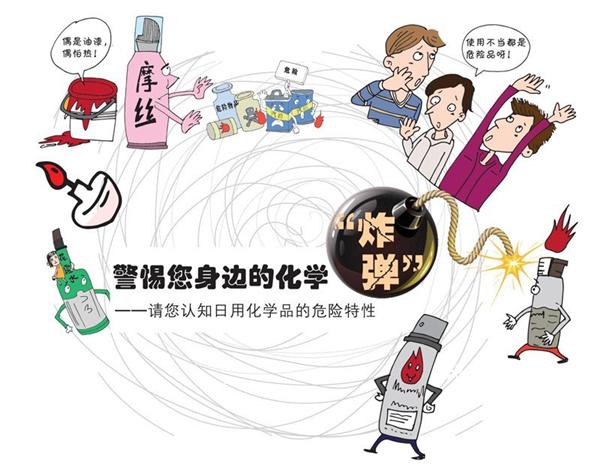In recent years, chemical explosions have become increasingly frequent, causing significant harm to people and property. Let's take a look at some of the most severe chemical explosions in recent history:
The "8·12" Tianjin chemical explosion was one of the most tragic incidents. Two loud explosions occurred, followed by multiple fires and thick black smoke filling the sky. The incident resulted in numerous casualties and left a deep emotional impact on the Chinese public.
On April 16, 1947, the "Grand Camp" cargo ship exploded in the port of Texas, USA. There were serious flaws in the transportation and management of chemicals in the United States, with little protection against high-temperature environments. At 8 o'clock in the morning, a warehouse containing 2,100 tons of materials caught fire, and the flames quickly spread. Firefighters tried to spray water on the ship, but the heat was so intense that the water evaporated instantly.
On September 21, 2001, the Toulouse chemical plant AZF exploded, creating a crater over 50 meters wide and 15 meters deep. Two factories were completely destroyed, resulting in 31 deaths and 2,500 injuries. The explosion’s seismic wave was equivalent to a magnitude 3.4 earthquake. Within a 6-kilometer radius, 30,000 homes and hundreds of companies suffered heavy losses, with damages totaling 2.3 billion euros. Investigations revealed that a few kilograms of sodium dichloroisocyanate had been mixed with the ground before the explosion, leading to a massive detonation of 300 tons.
After 14 years of cleanup, the entire AZF factory was decontaminated, and a cancer research center was built on the site. The insurance company paid out 2 billion euros, but questions about the incident still remain.

Today, Shanghai Hengyuan Biotechnology Co., Ltd. explains how various chemicals can be made fireproof and explosion-proof.
**Flammable Gases**
Flammable gases are those that can catch fire or explode when exposed to heat, fire, or oxidants like oxygen. Examples include acetylene, liquefied petroleum gas, and city gas. These gases are more prone to ignition than liquids or solids because they are already in a gaseous state under normal conditions. They can ignite with minimal energy, such as a spark or flame.
There are two main types of combustion: **diffusion combustion**, where the gas and oxygen mix during the burning process (like in a gas welding torch), and **explosive combustion**, which occurs when the gas and air mixture is within its explosive range and ignited.
Other dangerous properties of flammable gases include their chemical activity, diffusibility, corrosiveness, chargeability, and toxicity. For example, acetylene can explode when it comes into contact with chlorine or fluorine, and some gases can corrode equipment, leading to leaks and potential explosions.
To prevent fires and explosions involving flammable gases, it's essential to control ignition sources, conduct regular leak checks, and ensure proper safety measures for gas cylinders.
**Flammable Liquids**
Flammable liquids, often organic compounds, are highly volatile and can easily catch fire at room temperature. Their flash points are low, making them highly flammable. Many flammable liquids have high vapor pressure, meaning their vapors can accumulate in enclosed spaces and create explosive conditions if ignited.
These liquids are also highly mobile, meaning they can seep through small cracks and spread easily. When heated, they expand, increasing internal pressure in containers and risking rupture. Some flammable liquids react violently with oxidants or acids, leading to fires or explosions.
To reduce the risk of fire and explosion, flammable liquids should be stored in well-ventilated, fire-resistant warehouses, away from heat and sparks. Explosion-proof electrical equipment should be used, and containers should not be filled to the brim to allow for expansion.
**Flammable Solids**
Flammable solids, such as certain chemicals and dusts, can ignite or explode when exposed to heat, friction, or oxidants. These materials can be classified into flammable solids, self-igniting substances, and water-reactive materials. Proper storage, handling, and labeling are crucial to preventing accidents.
Understanding these hazards and implementing appropriate safety measures is vital for protecting people, property, and the environment from the dangers of hazardous chemicals. If you have any questions, feel free to reach out for more information.
Iwatch Screen Protector
Protect Your Apple Watch: Selecting the Best iWatch Screen Protector
The Apple Watch seamlessly blends technology with fashion. Still, its display can fall victim to daily hazards. The solution? A reliable Tempered Glass Screen Protector to keep it safe from scratches and knocks.
The Role of Tempered Glass in Protecting Your Apple Watch
The vibrant display of your Apple Watch is a hub of activity. But to ensure it stays that way, shielding it with a Tempered Glass Screen Protector makes all the difference:
Strength and Clarity Combined: These protectors, crafted from toughened glass, are designed to withstand common damage without dulling your display or disrupting the seamless interaction with your iWatch.
Safeguard Against Impacts: Life is unpredictable, but with a tempered glass protector firmly in place, your Apple Watch can take on the unexpected without fear of costly screen damage.
Sizing Up Protection: The Right Tempered Glass for Your Model
Whether you sport the 40mm or the larger 44mm Apple Watch, picking out a perfectly fitted Tempered Glass Screen Protector is essential. The right size protector will cover every curve of your screen, ensuring comprehensive protection without blocking any sensors or buttons.
Additional Perks with Tempered Glass Protection
Some Tempered Glass Screen Protectors come loaded with extra features for enhanced user experience:
Stay Clean and Clear: Look for iWatch Screen Protectors with an oleophobic layer, expertly designed to repel smudges, for a consistently fresh view of your apps and notifications.
Beat the Glare: Opt for 40mm Tempered Glass or 44mm Tempered Glass with anti-glare properties to ease your viewing experience in bright lighting conditions.The Wise Investment: Tempered Glass for Your Apple Watch
Equipping your watch with a Tempered Glass Screen Protector is smart safeguarding. It not only preserves the mint condition of your Apple Watch but also supports its full functionality.
Iwatch Screen Protector,40Mm Tempered Glass,44Mm Tempered Glass
Shenzhen TUOLI Electronic Technology Co., Ltd. , https://www.tlhydrogelprotector.com